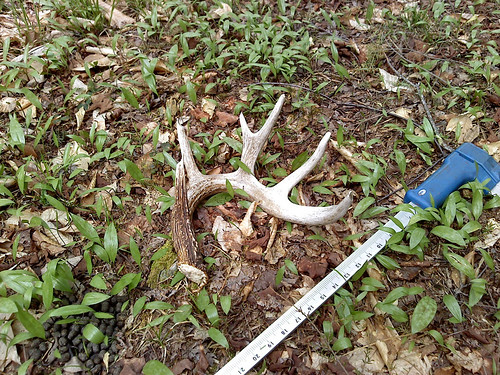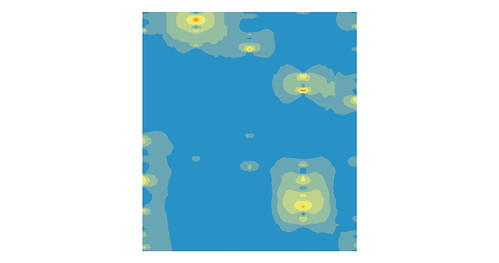
It’s a cool 37 degrees Fahrenheit as Alex Royo and I step out of the Forest Service truck and on to the muddy forest road. With the meteorologist calling for sun and a high of 66 degrees by lunchtime, I am already faced with the day’s toughest decision – do I keep my warm jacket on or leave it in the truck? Either way, half of my 3.5-mile hike is going to be uncomfortable. A quick glance at Alex reveals that he has opted to leave his jacket behind. As we walk into the forest, I can’t help but notice the contrast of colorful spring beauties and trout lilies against the dull brown forest floor. And already, there is the object of my hike -- deer pellets. To find pellets so early in the day one has to wonder, just how many deer are out here?
That’s the question that vexes hunters, scientists, and land managers throughout Pennsylvania and beyond. Each and every spring, a small army of individuals from the USDA Forest Service’s Northern Research Station, the Allegheny National Forest, multiple private land managing partners, and volunteers hike hundreds of miles of Pennsylvania’s forests to help determine how many deer the forest holds by counting the most visible part of a deer – deer pellets, which is the nicest term for deer waste.
This technique, known as fecal pellet group counts, is a widely used approach to estimate deer densities. Calibrated years ago by observing how many times per day white-tailed deer eliminate waste. The method consists of counting the pellet groups found along miles of unmarked paths in very early spring to obtain estimates of how many deer inhabit a given area over the winter.
High deer densities have been shown to be problematic because an overabundant herd devours tree seedlings and wildflowers, causing declines in diversity. However, too few deer is just as challenging because moderate browsing is essential to keeping aggressive plant species from overrunning the forest understory. The goal is to have a deer population that is in balance with the habitat.
Deer population estimates calculated from the pellet group counts are indispensable because they allow scientists to track how variation in deer population densities affects plant diversity. The estimates also are critically important to foresters who are responsible for regenerating diverse forests for future generations to enjoy – an expensive and difficult task in areas of high deer abundance. By identifying these areas, foresters can make recommendations to hunters where deer hunting can be most rewarding and is most needed. By keeping deer populations in balance with their habitat, hunters provide a key ecosystem service that promotes forest biodiversity by lessening browse intensity.
This coordinated and scientific approach to deer and habitat management has been successfully applied for over a decade throughout the 70,000-acre area in northwestern Pennsylvania known as the Kinzua Quality Deer Cooperative (http://kqdc.com or https://www.facebook.com/TheKQDC). Lessons from this project have been adopted by other land managing partners in the Commonwealth of Pennsylvania and have informed deer-forest management elsewhere.
For more information on deer and the impact they have on forests, please visit: http://www.nrs.fs.fed.us/sustaining_forests/conserve_enhance/timber/deer_impacts/
http://www.deerandforests.org/

